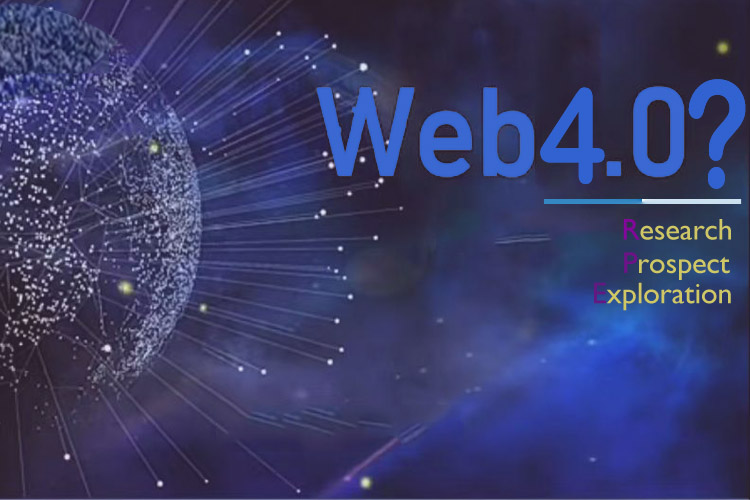Web 4.0?- Research, exploration, and prospect
Recently, a news related to policy has begun to circulate in the crypto world. Documents disclosed by the European Union reveal that the European Commission has approved a new strategy on Web 4.0 and virtual worlds. This strategy aims to guide the next technological transformation and ensure an open, secure, trustworthy, fair, and inclusive digital environment for EU residents, businesses, and public administration.

While the crypto world is still stuck in the narrative of Web 3.0, the European Union has already moved forward to Web 4.0. Finally, the traditional world is no longer just following the narrative but taking a step ahead to open up the next mainstream narrative for the crypto world.
Whether you have a thorough understanding of Web 3.0 or not, now let's take a quick look at the European Union's Web 4.0 plan, staying one step ahead.
What is Web 4.0? Before we look ahead to Web 4.0, let's first review Web 3.0. The European Union has also provided a definition of Web 3.0 in its documents: "The main characteristics of the third-generation Internet, Web 3.0, are openness, decentralization, and complete user sovereignty." This shows that the European Union has embraced the decentralized concept of Web 3.0 that the encrypted world has been advocating for years. As for the future Web 4.0, the European Union disclosed in its documents, "Web 4.0 refers to the expected fourth generation of the World Wide Web." Specifically, this generation of the internet uses various advanced technologies, including artificial intelligence and ambient intelligence, the Internet of Things, trusted blockchain transactions, virtual worlds, and XR capabilities. In the fourth generation of the internet, digital entities, real-world entities, and the environment will be fully integrated and able to communicate with each other, achieving a truly immersive experience and seamless integration of the physical and digital worlds. It is worth mentioning that although the European Union also considers blockchain as one of the cornerstones of Web 4.0, the wording in the draft initiative refers to trusted blockchain rather than the trustless blockchain supported by the native encryption world.
Is Web 4.0 far from encryption? As a long-term development strategy and future prospect, the technology of Web 4.0 seems to be too distant for the encryption market. Although blockchain is one of its technological foundations, trusted blockchain and the world of encryption are still far apart. In this strategic planning, what is the relevance between Web 4.0 and the encryption market?
The committee believes that this technological transformation is extremely important because its concept of openness and freedom reflects the values, principles, and fundamental rights of the European Union from the beginning. This strategy aims to ensure that European residents can use the virtual world safely and confidently, and enable European companies to develop world-leading applications.
"Web 4.0 should be driven by open technologies and standards to ensure interoperability between platforms and networks, and to guarantee user freedom of choice."
This seems to be compatible with the core spirit of the encryption world, but what about specific use cases and scenarios?
In terms of specific implementation, the European Union also provides some specific prospects. For example, digital twins can help test and optimize production processes, which is of great significance to the manufacturing industry. The virtual world also offers new ways for creation, promotion, content distribution, and interaction with audiences, which is crucial for the cultural and creative industries.
Which sectors of the crypto market are likely to benefit? Although this strategy is too ambitious for us to immediately identify the focus points that will help the crypto market, the Web 4.0 initiative still has a significant outlook on cryptographic technology.
The European Union believes that blockchain is the key to the virtual world, and its decentralized nature can support a large number of individuals and organizations to permanently record relevant information without the need for trusted third-party authorities.
The initiative mentions that blockchain technology can be used to manage assets in the virtual world, such as virtual currencies or virtual real estate, and enable secure and transparent transactions within the virtual world.
NFTs are another area highlighted in this initiative. The document points out that NFTs are being widely used in various applications. "NFTs promote innovation in content creation and provide opportunities for artists (and creators). NFT platforms directly connect artists (and creators) with potential buyers and facilitate direct connections at lower costs." This description seems cliché and has been adopted in the previous bull market.
Fortunately, the European Union has provided insights into the implementation scenarios: "In fact, NFTs have been introduced into new business models. NFTs can also be used in sales and event ticketing for specific use cases such as sports, fashion, gaming, music, etc."
Currently, despite the cliché narrative, NFTs are still in the early stages of use case development, leaving ample room for imagination and further exploration in the future.
Lastly, blockchain's importance to Web 4.0 is also mentioned in terms of security and privacy protection, cross-border payments, and international trade, but without detailed discussion. This may provide potential growth opportunities for zk technology, which is hot in the crypto market, as well as payment applications that are not yet popular.

 The Future of Fiber Optic Communication Network Architecture: Evolution and the Role of SDON Technology
The Future of Fiber Optic Communication Network Architecture: Evolution and the Role of SDON Technology
 What opportunities and challenges does free-space optical communication technology face?
What opportunities and challenges does free-space optical communication technology face?
 Opelink MPO Products for High-Speed Data Center Applications
Opelink MPO Products for High-Speed Data Center Applications
 CWDM vs. DWDM: Which Optical Transmission Technology Should You Choose?
CWDM vs. DWDM: Which Optical Transmission Technology Should You Choose?